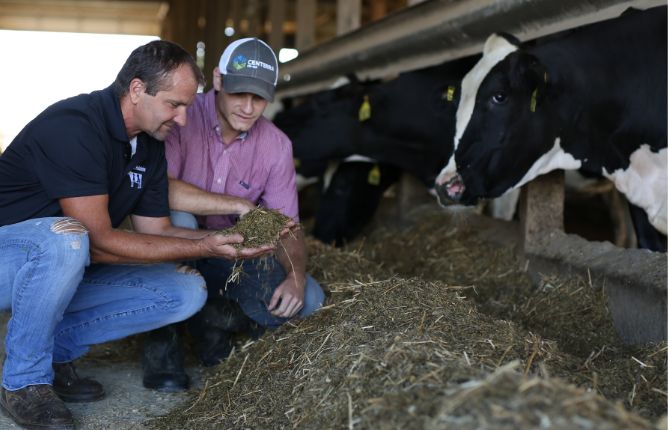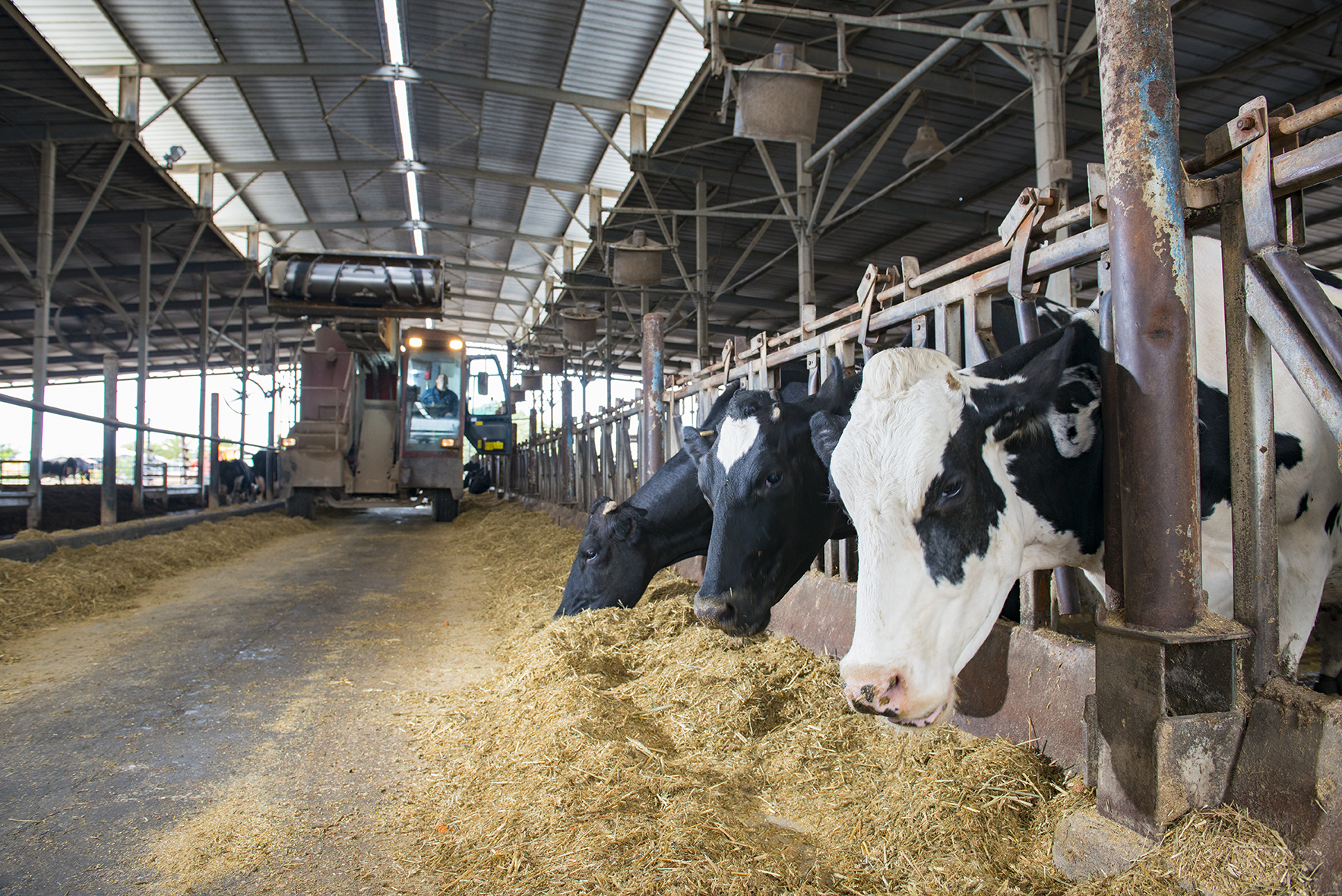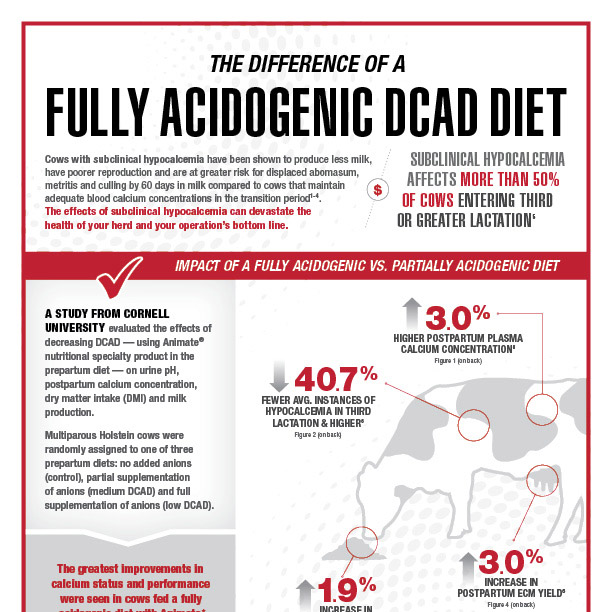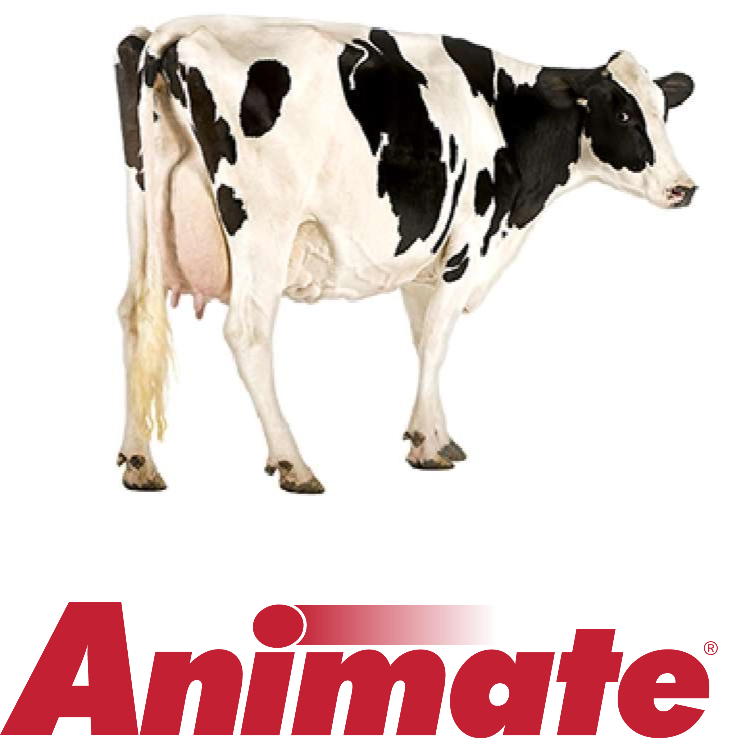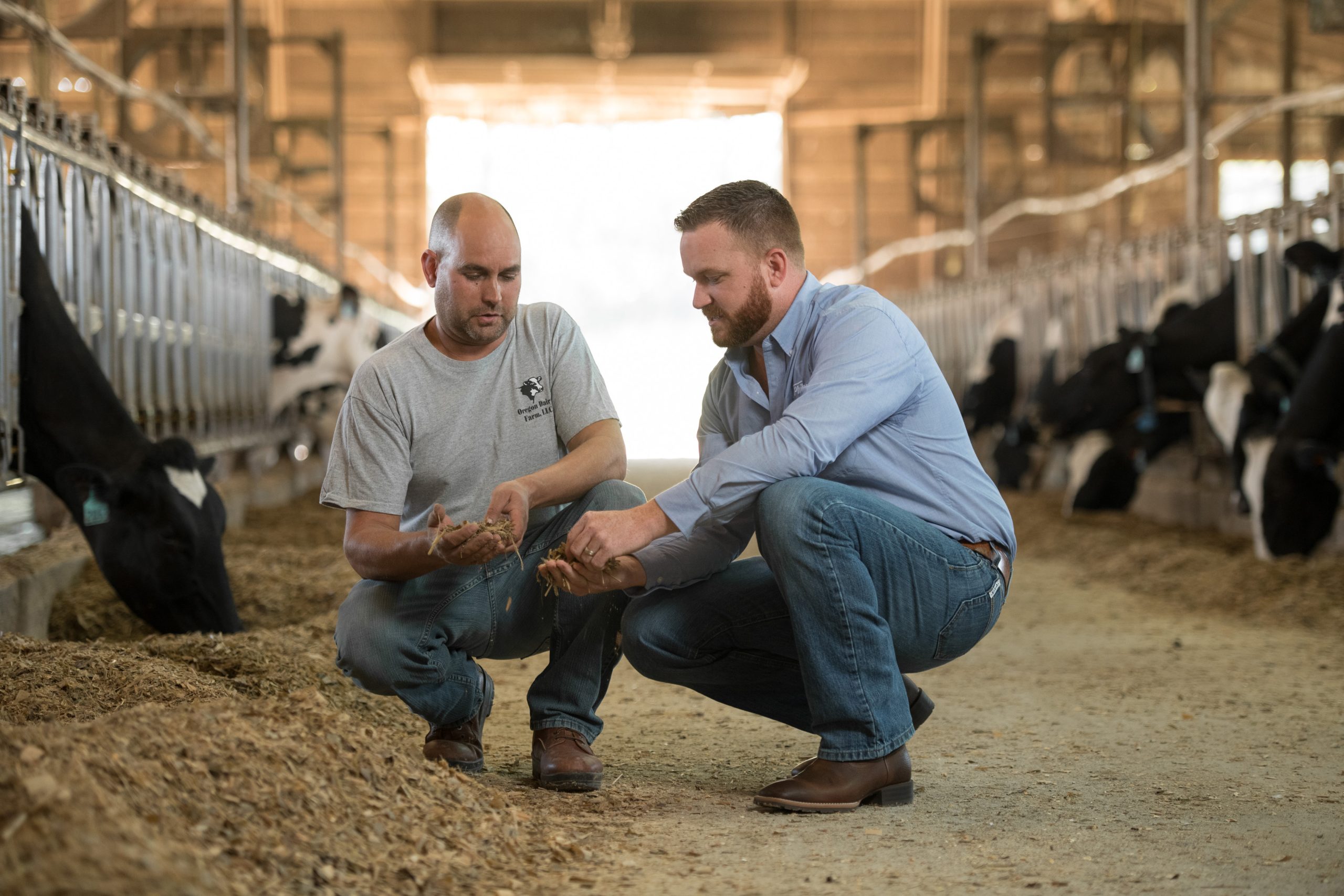
Ten Best Management Practices for Prefresh Feeding Programs
Information from Phibro Technical Services
David Kirk, Ph.D., PAS
The transition period before and after calving is a critical time in the cow’s life and the period when she’s most susceptible to disease, so it’s important to prioritize her nutritional and management needs during this time more than any other. An effective prefresh management and feeding program can help lead to high dry matter intake (DMI) and excellent health after calving for optimum milk and component production. Following are some tips for a successful pre-fresh program that prepares the cow for the sudden, drastic shift from late-pregnancy to lactation.
1. Provide adequate bunk space: No single factor has a greater impact on fresh cow health and performance than bunk space in the prefresh group. When close-up cows are over-crowded, submissive cows, first-lactation heifers and animals close to calving will eat less. Cows prefer to eat as a group, so it is important that all cows can get to the feedbunk at the same time. Close-up cows are wide, and each cow requires at least 30 inches of bunk space. This often means there will be open free stalls, especially in three-row and six-row barns, and there may be unused headlocks.
2. Allow at least 21 days on the prefresh diet: Animals require enough time to adjust to the prefresh diet and benefit from special ingredients and additives included to improve fresh cow performance. A number of cows will calve early, especially if they are carrying twins or are heat-stressed. Planning for a minimum three-week prefresh period allows enough time for all cows to receive the prefresh diet for an acceptable length of time.
3. Do not move cows too soon before calving: Moving cows and changing groups causes social anxiety, stressing prefresh animals, which can lead to reduced intake and performance. Cows should not be moved into a new group less than seven days before expected calving. Cows should be moved to a maternity area only when calving is imminent.
4. Keep cows comfortable: Freestall size, cushion and cleanliness increases cow lying time and subsequent performance. Prefresh Holsteins need stalls that are long (9 feet) and wide (51 to 54 inches). If prefresh cows are housed on a bedded pack, maintain good sanitation and provide 100 to 120 square feet per cow in the bedded prefresh area, and up to 200 square feet per cow in the calving pen.
5. Cool dry cows: Cooling dry cows during the summer has been shown to result in more milk production and improved immune function as well as increased birthweight and better health of calves.
6. Keep cows from sorting feed: Sorting can occur when dry or long particle forage is fed. This can be a particular problem in “controlled energy” diets that contain a high percentage of straw or hay. Straw and hay should be no longer than 2 inches to lessen sorting. Add liquid (water, molasses, corn syrup, etc.) to help reduce sorting of a TMR containing more than 55 percent dry matter. Feeding hay separately from a partial mixed ration (PMR) provides cows with a diet that is already sorted and should be avoided.
7. Maintain diet palatability: DMI drops by about one-third just prior to calving due to necessary and inevitable hormonal changes related to parturition. Avoid using unpalatable ingredients in the prefresh ration (poor-quality forages, animal byproducts, foul-tasting anionic salt products, etc.) or an undesirable presentation (pitted feed bunk floor, remaining old feed, enclosed feeding space, etc.), which can further reduce intake.
8. Avoid fat cows: Hormonal changes that alter animal metabolism occur in all cows around the time of calving, and fat stored in adipose tissue begins to be mobilized even before parturition. Cows with excess body condition simply release more fat, expressed as higher non-esterified fatty acids (NEFA), which often leads to reduced DMI, increased fat accumulation in the liver and greater risk of ketosis and related diseases. Body condition is best managed while cows are still milking. If a relatively large percentage of prefresh cows have a body condition score more than 3.5, consider adding rumen-protected choline to the diet to improve fat metabolism by the liver.
9. Provide proper energy and protein nutrition: Energy demands of the prepartum cow and rapidly growing fetus continue to increase through calving while DMI drops during the final week of pregnancy. This dilemma can be successfully addressed by seemingly contrary prefresh feeding strategies: provide for high intake of a controlled energy diet or feed a moderate- energy diet (often containing higher NFC and starch concentrations) when intakes are restricted.
Both programs can work well, provided daily energy needs are met by ensuring high DMI is maintained when controlled energy diets are fed, and NFC and starch levels are not excessive in moderate-energy diets, which may reduce DMI.
Do not overfeed energy to prefresh cows, which can impair fresh cow performance.
Overall intake of at least 1,200 grams of metabolizable protein is recommended for close-up Holsteins. This can be accomplished by feeding higher crude protein diets, often with considerable protein provided by forage; or feeding high-quality, ruminally undegradable protein ingredients such as heat-treated soybean or canola products, animal or marine byproducts, and rumen-stable amino acids.
10. Feed a fully-acidified, prepartum diet: Many fresh cows suffer from low blood calcium at calving due to the sudden demand for calcium in colostrum, leaving them susceptible to retained placenta, metritis, displaced abomasum, reduced milk yield and impaired reproduction. Feeding a prefresh diet with negative Dietary Cation Anion Difference (DCAD) helps maintain adequate serum total calcium concentration at calving (greater than 8.5 mg Ca/100 ml).
DCAD is the milliequivalent balance between positively charged elements (cations: potassium and sodium) and negatively charged elements (anions: chloride and sulfur). Feeding sources of chloride and sulfur to create a negative DCAD diet alters the acid-base status of the cow, reflected by reduced urine pH, which improves calcium status before and after calving. Feeding supplemental anions at a rate to maintain urine pH at 5.5 to 6.0 (fully-acidified) has been shown to result in significantly higher serum total calcium, DMI and milk yield after calving than feeding a prepartum diet leading to partial acidification (urine pH 6.0 to 7.0) or non-acidification (urine pH above 7.0).
Maintaining full acidification may take a considerable amount of dietary chloride and sulfur, so it is very important to use an anion supplement that will not reduce DMI. When using a fully-acidified, prefresh strategy, diets also should contain proper calcium (minimum of 180 g of calcium and not less than 1.5 percent dietary calcium) and magnesium (0.45 to 0.50 percent) to maintain optimum calcium status.
It’s also important to record health events and milk production of fresh cows and to monitor these results to confirm the prefresh management and feeding program are effective.
Management and feeding of prefresh cows will impact animal performance throughout the upcoming lactation. Dairy operations that ensure these management and diet recommendations are properly implemented in their prefresh programs may experience better health, increased milk production and improved reproductive performance.
References:
– Chapinal et al., 2011. J. Dairy Sci. 94:4897-4903.
– Chapinal et al., 2012. J. Dairy Sci. 95:1301-1309.
– Martinez et al., 2012. J. Dairy Sci. 95:7158-7172.
– Moore et al., 2000. J. Dairy Sci. 83:2095-2104.
– Nordlund et al., 2006. Proc. 39th Ann. Amer. Assn. Bov. Pract., Auburn, AL. pp36-42.
– Tao, S. and G. E. Dahl. 2013. J. Dairy Sci. 96:1-15.
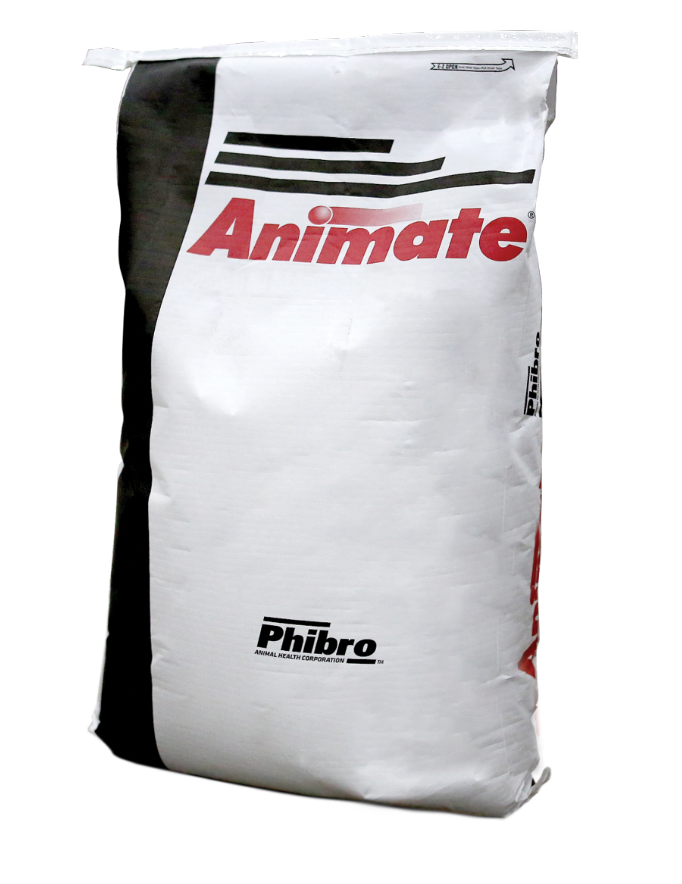
Start with the Right Anion Source
Animate® nutritional specialty product is a unique and patented anionic mineral that has been shown to help keep transition cows healthy and productive.
Learn about Animate







